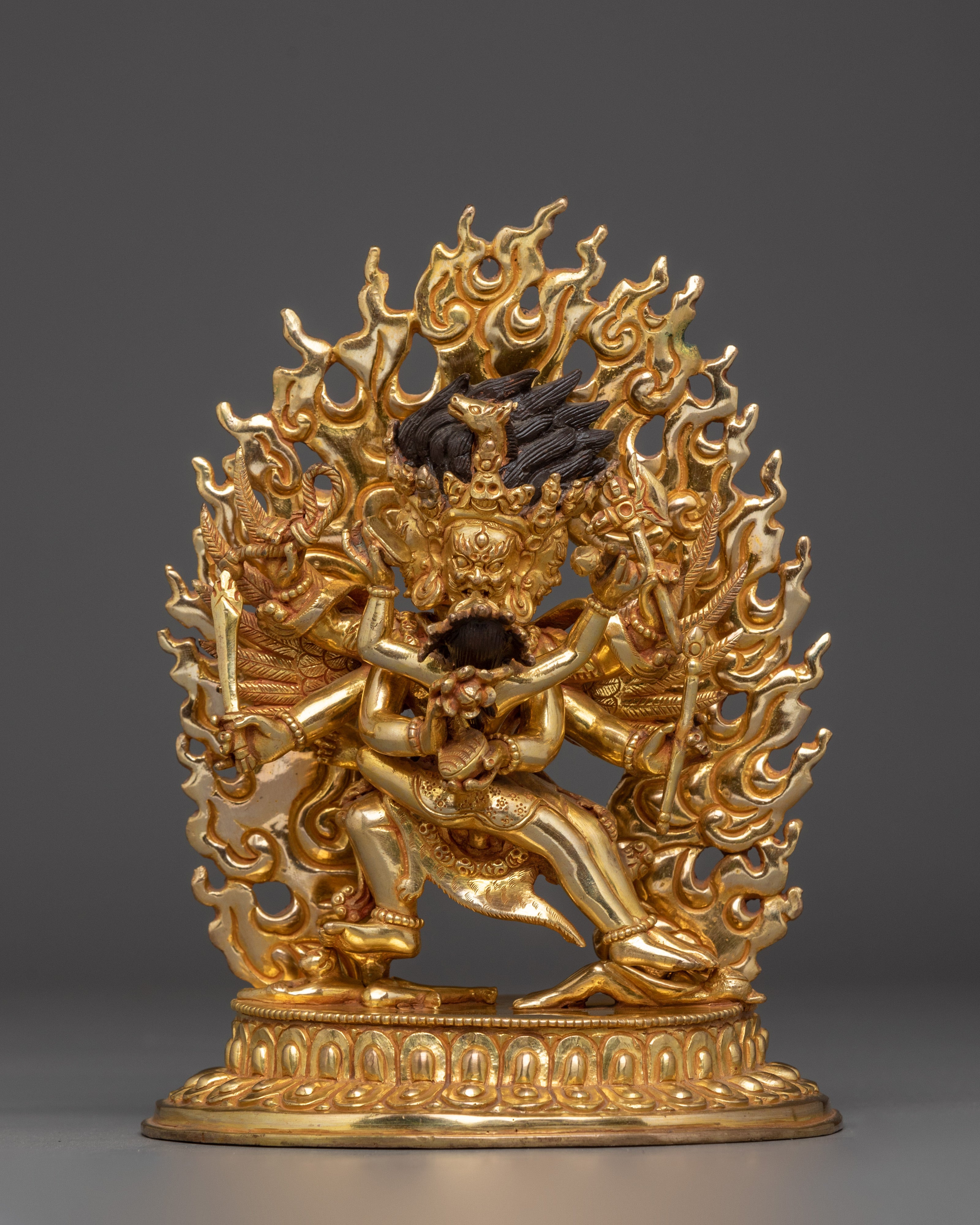Consecration went smoothly; related photos and video shared. Thanks to Nima for all the support during the consecration arrangements
Fantastic! Beautiful statue and very considerate seller.
Very beautiful and perfect statue of the Dhyani-Buddha Amogasiddhi representing the wisdom of fulfillment, accomplishment and spiritual success.
I really loved the statue ❤️—it’s even better than I expected. The customer service was amazing too; replies came promptly and you guided me so well through the shipping process.
The statue is very beautiful. The craftsman who crafted it clearly shows the care and heart he put into it. It is a true dharma jewel on the altar. Shipping was quick, considering the recent events in Nepal. It was carefully packed and filled in a wooden box. If you're buying for shipping to the European Union, please note that customs duties on items from outside the EU are as high as 23 percent of the value.
excellent service and great quality
Great communication! There were some imperfections that they noted before shipping. Which I appreciated very much their care. It was delivered quickly and the statue is beautiful. Thank you. I highly recommend doing business with this shop for your dharma needs.
I just received the statue, and she is truly astonishingly beautiful. She matches perfectly with the Saraswati thangka at my place — it almost feels as if she is walking right out of the thangka! The craftsmanship is remarkable, and I am deeply impressed. Nima is fantastic. Always reply my message quickly. I sincerely appreciate your kind help and communication throughout the whole process.
Beautiful Statue
Impeccable, magnificent quality statue and very serious service!
It's a beautiful little statue of Machig Labdron. It's every bit as descried. The shipping was on time. The wrapping is extremely careful. Thank you so much.
Outstanding craftsmanship and perfectly photographed and I love the statue
I'm so happy to receive my Vajrassattva statue. It exceeded all my expectations. It was carefully packed, the quality of the statue it's outstanding, the friendliness of customer service its remarkable. Thank you very much Nima La and Terma Tree team!!
The statue is exact as described, and shipping is very fast. Would recommend this seller.
Another fine work of art from Termatree. Carefully packed and rapidly shipped, this Vajrakilaya is a powerful statue that supports my meditation practice and is pleasing to behold. Five stars.
Vajrayogini is stunning. The details are amazing. It's easy to make out her facial expressions, skulls, feet, and the ring of fire around her. You can tell she's handmade. There is a consecration hole in her back.
I'm searching for an invocation so I can add her with Standing Green Tara to my daily practice.
I wouldn't hesitate to buy from here again.
Is a Happy Occasion for me when the Lord Mahakala arrived. Thank you
The White Tara statue is truly wonderful, the craftsmanship is truly astounding. I am so very pleased with the item, I can’t praise you enough. I’m very grateful for the customer service and the effort you put in making sure my statue arrived in perfect condition. Many thanks. John.
Everything is perfect! A very beautiful statue of White Tara that radiates purity!
Thank you so much for all your kind words and wishes, truely precious connection to Nepal.

























